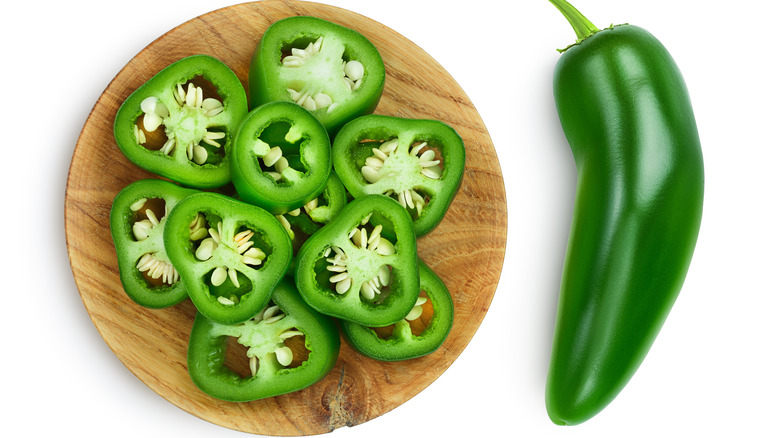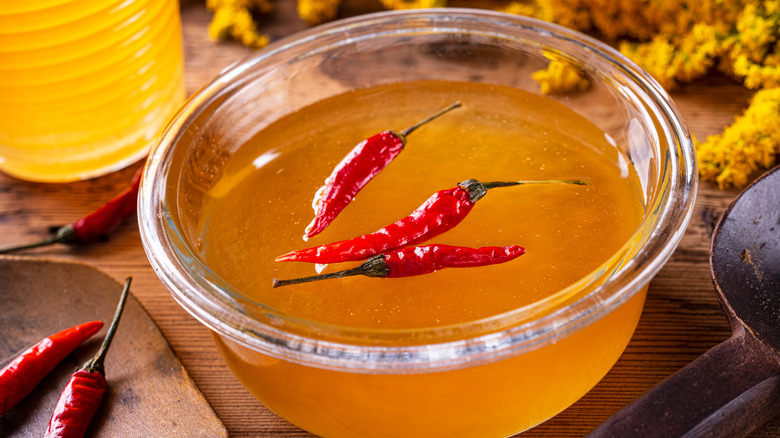This Is What You Should Do With Leftover Chile Seeds
Anyone who isn't the biggest fan of super spicy dishes, or is trying to tone down the heat level for others consuming the same meal, may have heard that removing the seeds is one of the best ways of keeping the heat level in your dish manageable. However, the seeds aren't actually the source of all that heat — the spice levels are in fact courtesy of the capsaicin glands that are located between the spongy white area around the seeds and the wall of the pepper. It's simply that cutting up your hot peppers can cause these glands to burst over the seeds, and removing a portion of that capsaicin-containing interior will help temper the heat.
Regardless, if you're a devoted seed-remover when using chiles in a dish, you may regularly toss all those seeds and pith from the interior in the trash. Not so fast, though — there's actually a really clever way to use those seeds to create something absolutely delicious. Chef Brendan Nomura from Old Thousand restaurant in Austin, Texas, suggests that the seeds be steeped in honey or vinegar in order to infuse some of that heat and flavor (via The Kitchn). Forget those overpriced infused oils and honeys you might see at the specialty markets — you can make your own version at home in a more sustainable way, using up those leftovers to craft a gourmet condiment or two of your own.
How to infuse the seeds properly
With any kind of infusion, it's all about the flavor you want. The rule of thumb is that the longer something is steeping in your honey or vinegar, the stronger that flavor will be — so keep your infusion time relatively short for just a hint of spice, and longer if you want to pack a powerful punch. One tip from "The Pioneer Woman" when it comes to infusing honey is to ensure your add-ins are dry, in order to avoid any potential contamination that adding liquids might introduce. So, let those pepper seeds dry out a little bit on your counter before you mix them into your honey. Many recipes also involve introducing heat at the beginning to lock in that flavor, before allowing your mixture to infuse for a few additional days. Since they're relatively small, you can either strain the seeds or leave them in, it's a matter of preference.
Whether you're whipping up some spicy honey or tangy vinegar with a bit of a kick, the uses for these infused condiments are endless. Add a drizzle of hot honey atop your chicken sandwich or serve up your homemade pizza with a dollop on the plate for a truly gourmet dipping experience. For vinegars, introduce an element of unexpected spice into your salad dressing or vinegar and oil dip for fresh focaccia. So many possibilities, all from something that you may have previously just been throwing away.

